 By M.P. Pellicer | Stranger Than Fiction Stories Sometimes years, or perhaps decades pass before the fate of a person becomes known. Missing that doesn't always mean dead, but in some cases it most definitely does. 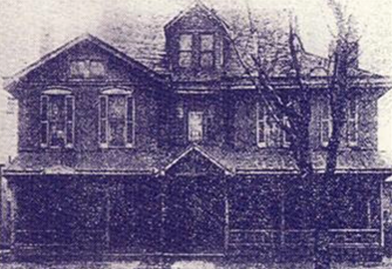 Indianapolis Orphans' Asylum on Capitol Ave and 14th Street c.1865 Indianapolis Orphans' Asylum on Capitol Ave and 14th Street c.1865 The following is a complicated story of a woman's fate, which took many years to come to light. In April 1920, a skeleton was found sitting in a dark corner of an attic. The building located at 1333 North Capitol Avenue had once been Union States Hospital, and before that the Indianapolis Orphans' Asylum. The bones were believed to be those of a patient named Carrie T. Selvage who was last seen on March 11, 1900. After Carrie Selvage had disappeared, the asylum was made into a rooming house, and then was being remodeled to be used as a garage. The discovery made by a structural iron worker, who tore the wall away so that a girder could be placed in position solved the 20 year mystery. The skeleton was clothed in a blue dress and slippers. These were identified by Joseph and Edward Selvage who had given the slippers as a gift to their sister a short time before she disappeared. The reason for her death was initially unresolved. Some thought that due to her mental illness she had hid in the attic and starved to death. Others believed she was murdered, even though the coroner could find no evidence of violence. 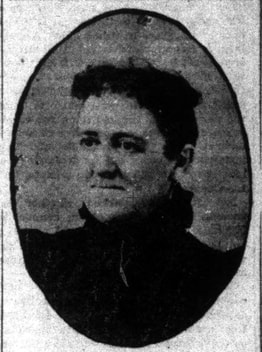 Carrie Selvage mysteriously disappeared in 1900, and her remains were found in 1920 Carrie Selvage mysteriously disappeared in 1900, and her remains were found in 1920 Carrie Selvage, 44, was the oldest of 6 siblings born to an old and wealthy Indianapolis family. Before her mental breakdown she had worked as a teacher at the public schools. On the morning of Carrie Selvage's disappearance, she had returned from a short walk with her private nurse. She asked her to go to the kitchen and get her some milk. When the nurse returned she was gone. The disappearance of this patient caused the hospital to close its doors a week later. In order to find her, a considerable and costly search was made for her beyond Indianapolis. Nearby bodies of water; Fall Creek and White River were dragged in the hopes of finding her body. A canal was emptied out; none of these efforts bore fruit. The discovery of her skeleton convinced her brothers she was left in the attic after she was murdered. Whoever killed her used the unusual construction of the building, which was a second attic reached by going through a door to the left of the main attic, then climbing over an inside roof and down to the right to the small corner where the remains were found. They said their sister was weak and half blind, and they couldn't believe she would have found this spot on her own. Many recalled a strange story and trial that took place only two years after Carrie's disappearance. 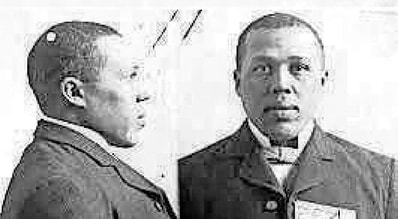 Rufus Cantrell dubbed the "King of the Ghouls" for his grave robbing activities Rufus Cantrell dubbed the "King of the Ghouls" for his grave robbing activities THE KING OF THE GHOULS In 1898, Rufus Cantrell was discharged from the United States Infantry due to epilepsy, which was followed by "confusional and suicidal insanity" that existed prior to his service in the military. In 1903, he was part of a case with ties to grave robbing and the murder of Doc Lung a Chinese merchant who was killed in his laundry on Indiana Avenue. "His head was almost severed from his body with a meat clever which was found in the place." 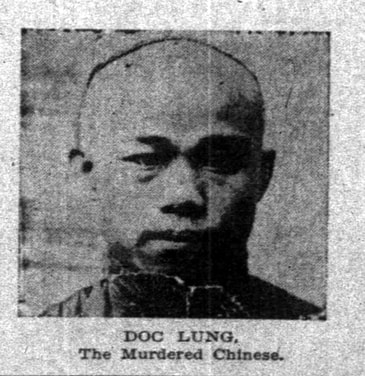 Doc Lung was killed in 1902 during a robbery at his laundry Doc Lung was killed in 1902 during a robbery at his laundry THE MURDER OF DOC LUNG Doc Lung (real name Dong Gong Chung or Tshun) was not just a simple laundryman. He along with an associate named Pan Wing went house to house to give customers opium hits from a pipe they brought with them. They were arrested in February, 1895 and charged with conducting a traveling opium joint, after they had gone to a house on West Market Street to give opium smoke to three women. During the trial it was noticed the Chinese population in the city would have nothing to do with a mysterious man who identified himself as Japanese. He sat in on the court proceedings, and gave his name as T.Y. Shung. He said he was connected to the Japanese legation at Washington. He was dressed in western clothes, along with four Christian Endeavor pins. His hair was long and straight, and his forehead was shaved. The Chinese claimed he was lying about his nationality. He said the Japanese minister wanted him to make a report upon the cases of Doc Lung and Pan Wing. The question was asked that with China and Japan at war, why did Japan interest itself in two Chinamen living in Indianapolis? The two men were fined $300 each, but did not go to jail. The presence of Mr. Shung was never explained. 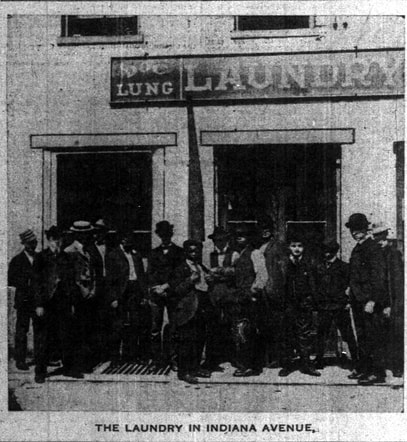 Doc Lung laundry on Indiana Ave. Doc Lung laundry on Indiana Ave. However Doc Lung was not long for this world because he was killed seven years later in May, 1902. His room was ransacked and it was believed as much as $1,000 was taken. He always carried large sums of money, and had recently won a fantan game at the conclave of the Masonic Order of China. Some believed he was killed by a Highbinder. These were known as hatchet men or salaried soldiers of the Tongs associated with illegal immigration and prostitution. They used an odd mix of old world and new weapons such as swords, knives, daggers and clubs. They were also proficient in the use of a hatchet they had modified for their own use. The Chinese residents of the city denied that any Highbinder had killed him, because they would become aware if any had entered the city. They believed he was murdered by a local robber for his money, and refused to discuss anything further. Another fact that pointed the killer was not Chinese, was that the coat and pants of the dead man were stolen. Detectives would go on to arrest Chin Hee who had once worked for Doc Lung, indicating he knew how to open the register at the laundry, and right after Lung's death had become flush with money, whereas before he was broke. He was however acquitted by the grand jury. 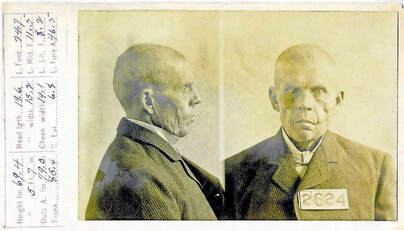 Wade Hampton West a Confederate veteran, implicated by Rufus Cantrell as robbing graves for over 25 years died 2 years into serving his sentence Wade Hampton West a Confederate veteran, implicated by Rufus Cantrell as robbing graves for over 25 years died 2 years into serving his sentence THE GRAVE ROBBERS Doc Lung's murder trial would eventually convict and sentence Nimbus Davidson and James Andrews, two associates of Rufus Cantrell to lengthy prison sentences. Andrews would go on to be paroled in 1910. However many dark deeds were disclosed during the trial. When Cantrell took the stand, he testified that he was once a "trusty" at the county jail, which damaged his credibility instead of enhancing it. He disclosed about a citywide network of grave robbers. Later it would turn out he led a 40-men gang known as The Sign of the Cross. They were used to procure corpses for doctors in the city. A doctor would tell him specifically which corpse he wanted, then he would pay Cantrell and the men who helped him $30 for each dead person. Cantrell's outfit was in competition with another body-snatching gang run by Wade Hampton West, a Confederate veteran who had been stealing bodies for a quarter of a century. The trade in dead flesh was so lucrative that it was determined that over 100 graves had been robbed during a three month period. Cantrell inferred that if the truth came out it would become pretty hot for some doctors connected with various Indianapolis medical colleges. He named Dr. Joseph Alexander, but omitted the name of Dr. Goethe Link who was a student assistant in the Central College of Physicians and Surgeons. Supposedly he was threatened that if he implicated anyone else, it would be brought to light that he had "burked" some of the bodies. In other words he had killed individuals when he ran short of the recently deceased. The court was informed that Cantrell was warned against speaking about William "Billy" Moffitt. Cantrell didn't heed the warning and implicated Moffitt who was arrested. Moffitt was a well-to-do citizen in Indianapolis, but it wasn't his wealth that protected him, but his connection to the Indianapolis Medical College. He had once been only a janitor at the college, and it turned out he had amassed his riches by robbing graves and floating them down the White River at night for the last 25 years. Eventually twenty-five body snatchers were indicted, along with four doctors from the medical college, a funeral director and saloon owner who stashed bodies in the basement. Cantrell testified he had obtained 11 bodies for Dr. Joseph Alexander, three of them from the insane hospital cemetery, and the rest from the German Catholic Cemetery and other local graveyards. What made tongues wag was that bodies were taken from Crown Hill a guarded cemetery where the wealthier families buried their dead. It proved that not only indigents ended up on dissecting tables. In the case of the asylum dead, the doctor told Cantrell he had fixed it with the undertaker and the hospital physicians for him to take the bodies. He would take the corpses to the basement of the Central College with other dissecting material. But it wasn't only doctors who tipped off the grave robbing gangs, but ministers and funerals directors who passed on information so the corpses could be taken before rigor mortis set in. However it wasn't only Cantrell's confession that brought the dark business to light; family members were tipped off anonymously of the grave robbing. One man discovered the body of his wife in a pickling barrel at the Central Medical College. Other bodies had been sold to colleges in Louisville, Kentucky and Cincinnati. 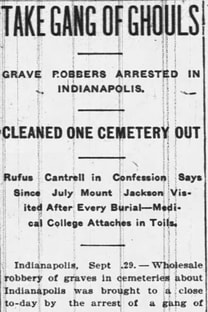 The story of the grave robbers horrified the populace of Indianapolis c.1902 The story of the grave robbers horrified the populace of Indianapolis c.1902 During the trial, based on Rufus Cantrell description of the corpse business, Carrie Selvage's brothers had four graves opened in the asylum cemetery in an effort to find her; by then she had been missing for three years. Cantrell was taken to the cemetery and he pointed out the ones who were robbed. He said there was a grave where Miss Selvage's body would be found. Inside was a coffin with an upside down lid and it was laid in a slanting position. The coffin was found as he described, however the body inside did not belong to Carrie Selvage or Mary Stoops who was buried there in October, 1901. The body in the grave was only covered with a sheet, and the woman was wearing white slippers with high French heels. They were unable to identify her. Of the other three graves, two had corpses, and one was empty. Joseph Selvage said he had no doubt the unnamed woman was taken from a medical college, and placed there after the robbery of Mrs. Stoop's body, and that Cantrell hoped that he would identify the woman as his sister. Detectives also claimed that Cantrell deliberately planned the murder of Doc Lung, and engaged other men to do the work, and take the fall for the crime. Cantrell only received a short sentence on the charge of grave robbing, since nothing else could be proven against him. At the conclusion of the case, the whereabouts of Carrie Selvage remained unknown. 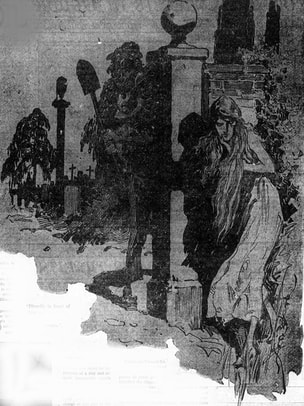 A depiction of Carrie Selvage's encounter with the grave robbers on the night of her disappearance in 1900 c.1920 A depiction of Carrie Selvage's encounter with the grave robbers on the night of her disappearance in 1900 c.1920 Cantrell faded from the headlines until 1909 when a story titled "Grave Robber has reformed and takes bride: A Christmas wedding" ran in the local newspaper. Upon being paroled from prison he started to work at a mill, and had taken a 17-year-old bride. However Cantrell was too colorful a character to lead a humdrum life. By 1915, he had moved onto another wife, and was running revival meetings as an evangelist for the Charity Army of America in Detroit, Michigan. His new wife was once married to a man serving a life sentence in Marquette penitentiary, and her half-brother Sunny Williams was known as a safe blower. It seemed they came to the attention of authorities for their collecting activities. It wasn't until Cantrell, who was still referred to as the "king of the ghouls" came under police scrutiny once more that the name of Carrie Selvage surfaced again. He implicated a man who was arrested with him in Detroit. Cantrell said Eldridge Gowdy killed Carrie Selvage after holding her in the basement of a house, and he was the one that sold her to the medical college. This was one of Cantrell's ploys, which was to give information about other crimes in order to detract from his own misdeeds. At this time Selvage's body was yet to be discovered, and the Indianapolis police discredited Cantrell's story claiming he had told a similar story in 1903, and he had led them on a wild goose chase to find Selvage's body. They claimed no evidence had ever been found that she had been murdered. "Cantrell admitted under oath to being a part-time preacher, an undertaker, truck gardener and confessed grave robber. But he vehemently denied having preached a funeral service and on the very next night digging up the body." This was a reference to the story told that he was a pallbearer at his niece's funeral and later sold the body to the medical college. In 1916, for their troubles Cantrell and Gowdy were sentenced to two years each in Marquette penitentiary on a charge of larceny. Their scam involved frisking people's pockets while Cantrell conducted services in the Gospel Praise Mission. 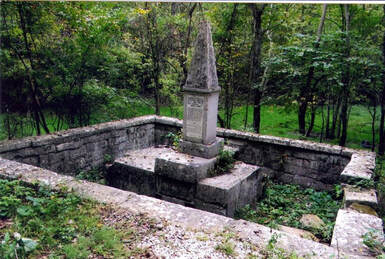 Foote's Tomb in Bedford, Indiana where he is buried with his brother, his horse and other belongings he thought he could use in the afterlife Foote's Tomb in Bedford, Indiana where he is buried with his brother, his horse and other belongings he thought he could use in the afterlife After this Cantrell's name faded from the newspapers, and no doubt he wanted no publicity about his death and his final resting place in case he would be dug up, and examined to explain his psychopathology. However after fifty years his name was still synonymous with body-snatching, and was mentioned in a news article from 1957. It detailed the discovery that someone had tried to break into the tomb of Dr. Winthrop Foote, one of the early founders of Indianapolis who died in 1856. Dr. Foote believed "like the ancient Egyptians" that when he died he would need his horse, guns, ammunition, and other items for daily living to use in the afterlife that is. He was buried in a 3-room mausoleum with his brother Ziba Foote (1785-1806). The young man had graduated from Yale and drowned in Foote's Grave Pond in Posey County while conducting government surveys. The pond was named after him, when he companions buried him next to the small body of water buried in the bark of a tree. In 1829, Dr. Foote with the help of an old man named John Walter found his brother's remains, and brought them back to Bedford to a secluded graveyard known as Foote's Tomb. It was created by Dr. Foote when he found a large block of limestone had fallen from a cliff in a secluded valley on a piece of land he owned. He had a hole cut into the stone to create a vault. Ziba's epitaph read: "And by the buried bones of him whom living I loved best, See me at last laid quietly, then leave me to my rest." Police found Dr. Foote's body lay encased in a cast-iron casket held together with nuts and bolts, shaped to the contour of his body. A leather bag was deteriorated, but a stone box containing guns he had buried with him was untouched. Only the first of the three rooms had been opened. The other rooms contained his horse and his brother's body. Authorities believed the robbers were trying to steal the firearms which due to their age would bring in quite a bit of money. It seemed Dr. Foote anticipated the scourge of body-snatching that swept through Indianapolis many years later, and had made his mausoleum robber-proof. 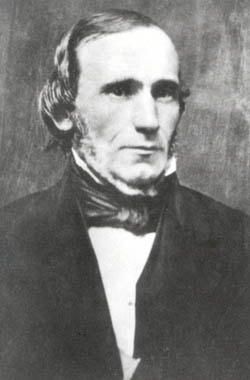 John Scott Harrison's body was stolen for medical dissection after his death in 1878. John Scott Harrison's body was stolen for medical dissection after his death in 1878. The dirty trade of human bodies predated the lurid court case of 1903. Case in point was the robbery of John Scott Harrison's body in 1878. He was the son of William Henry Harrison, first governor of the Indiana Territory and a member of the U.S. House of Representatives. His son Benjamin would eventually become President of the United States in 1889. At the same time of Harrison's death, William B. Devin a young friend of Benjamin Harrison died a few days before his father, and was buried in the same cemetery. While attending the Harrison funeral it was noticed that Devin's grave was disturbed, and the grave was found to be empty. The Medical College of Ohio at Cincinnati described as a "body hole" immediately came under suspicion. Another Harrison brother, John and a cousin George Eaton went to Cincinnati and searched the medical college. They saw suspicious behavior by a janitor on the 5th floor dissection room. A Cincinnati detective found a nude body hoisted up by a windlass and rope leading to a chute by the alley door. The corpse's face was covered. John Harrison said it was not the man he was looking for since William Devin had died of consumption, and he was emaciated by the time of his death. The detective insisted he look at the man's face anyway. Harrison was enraged to find that it was his recently buried father who had been stolen. Devin's body was found weeks later in a brine vat at Ann Arbor University (Michigan). 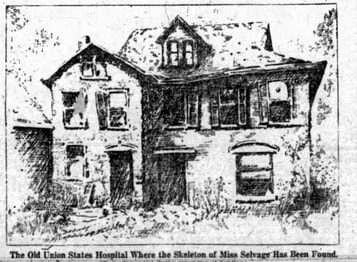 A house that kept its secret very well A house that kept its secret very well Ultimately it was never proven if Carrie Selvage was murdered even though they were rumors a man fitting Rufus Cantrell's description was seen putting her into a carriage. Supposedly his gang came across her when they were leaving a cemetery after stealing a few corpses. At the gate of the graveyard they were surprised by Carrie Selvage which commenced to scream. A few days later they killed her, and sold her corpse for $50 to a college. Once her body came to the dissection table a medical student immediately recognized her as the missing woman whose picture was plastered across newspapers locally and nationwide. Instead of notifying the police, the college which would have been in a difficult position of explaining how they had come by the corpse, instead disposed of her up in the attic where she was found 20 years later. Or perhaps the poor woman with her failing eyesight somehow managed to find the niche in the upper reaches of the house that for years remained unfound by anyone. How do you think Carrie Selvage ended up there? Sources - The South Bend Tribune, The Indianapolis News, Nashville Banner, The Indianapolis Star
0 Comments
Your comment will be posted after it is approved.
Leave a Reply. |
Stranger Than Fiction StoriesM.P. PellicerAuthor, Narrator and Producer Archives
July 2024
Categories
All
|
Stories of the Supernatural
- Stories of the Supernatural
- Miami Ghost Chronicles
- M.P. Pellicer | Author
- Stranger Than Fiction Stories
- Eerie News
- Supernatural Storytime
-
Astrology Today
- Tarot
- Horoscope
- Zodiac
-
Haunted Places
- Animal Hauntings
- Belleview Biltmore Hotel
- Bobby Mackey's Honky Tonk
- Brookdale Lodge
- Chacachacare Island
- Coral Castle
- Drayton Hall Plantation
- Jonathan Dickinson State Park
- Kreischer Mansion
- Miami Biltmore Hotel
- Miami Forgotten Properties
- Myrtles Plantation
- Pinewood Cemetery
- Rolling Hills Asylum
- St. Ann's Retreat
- Stranahan Cromartie House
- The Devil Tree
- Trans-Allegheny Lunatic Asylum
- West Virginia Penitentiary
- Paranormal Podcasts
"When misguided public opinion honors what is despicable and despises what is honorable, punishes virtue and rewards vice, encourages what is harmful and discourages what is useful, applauds falsehood and smothers truth under indifference or insult, a nation turns its back on progress and can be restored only by the terrible lessons of catastrophe."
- Frederic Bastiat
- Frederic Bastiat

Copyright © 2009-2024 Eleventh Hour LLC. All Rights Reserved ®
DISCLAIMER
DISCLAIMER
 RSS Feed
RSS Feed
















